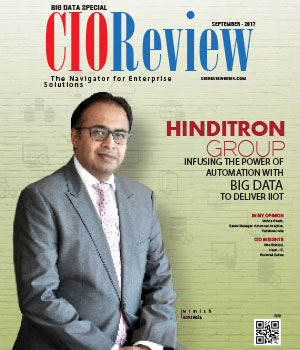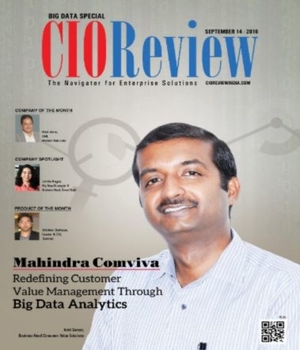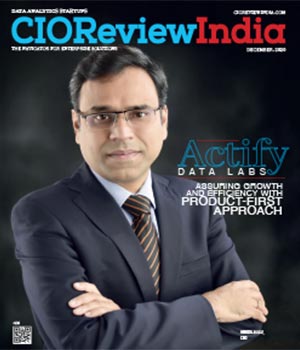
3 Things to Pack for Your Big Data Journey
Mohita Ghosh, Senior Manager- Advanced Analytics, Vodafone India | Monday, 04 September 2017, 12:47 IST

Technology has made it possible to track the minutest piece of information about customers and their behaviour across touch points, which was not getting captured in the past. This has led to humongous amount of data which has gamut of insights hidden in it and this welcomes us to the world of Big Data. Big data can concise in 3Vs i.e. more volume of variety of data with a greater velocity, exposing the business to bigger avenues of pre-emptive business decisions. This is the reason why today, whether or not an organization is ready to handle existing data, they are tying their seat belts for a big data take off. Hey, but take a minute to pack all you need before you leave for your big data journey.
Mistakes that Organizations do in Adopting Big data
Today from a C-level executive to a ground level associate, everybody is looking up to the Google, Amazon and Uber to get into the big data band wagon and reach as close to real time decision making as possible. But before we do that it is imperative to evaluate that whether the organization is ready for big data. Organizations need to understand that adopting big data is a transitional process. Readiness for big data can be established only after you have made sure that the existing data is used optimally.
The starting point to big data can be different for different organization. The key lies in correctly identifying where you are in your “Decision by Data” journey. In nutshell, see if in all these years you have been able to make Analytics as the way of doing business? If the answer is ‘Yes’, then you are ready for your big data journey. Else, it’ll result in just another cost center from where you’ll fail to derive any value. The journey to big data has to traverse through Data- Analytics- Integration.
Establish a Proper Data Warehouse
Today, irrespective of which sector you belong to, undoubtedly you are only getting in close proximity to technology. The technology you use decides the frequency at which you get the latest data, which in turn decides the relevance and effectiveness of the insights generated from it and lays the benchmark for the organization’s big data journey. Before ensuring the 3Vs of big data i.e. volume, variety and velocity, it is essential to make sure that error free data from all conventional data sources is properly stored in structured databases.
Companies still struggling to collect and maintain sanity of their customer data from usual touch points have a long way to go before they embark on their big data journey. Though big data has opened access to unstructured data sources but that isn’t a replacement of advantages of having structured data warehouse. It is worthwhile to carefully measure depending on your business, what percentage of data you can manage to keep as unstructured and directly source from the web.
Making Analytics the Core of Doing Business
Traditionally organizations, particularly from legacy industries have operated on the mantra of Sense-Guess-Respond. The amount of data that is available today is constantly urging to shift to the new mantra of Predict-Plan-Act. There is no point storing huge amount of data if you aren’t using it wisely. Educating the end business user about the benefits of analytics is imperative to make it core of any decision making. Most business users confuse MIS with analytics. MIS is the very first step to see the current situation but it is only the surface. To fathom what lies beneath, analytics is the way forward.
Integration of Data and Analytics with Business
Most organizations though have realized the need of analytics by setting up in-house analytics or outsourced capability, but the major challenge lies in integrating this with the business. Today if businesses want to keep winning in the market place, they have to make sure that analytics output integrates with real time decision points. Hence, it is important that your marketers start speaking the language of analytics. It takes time and resources to reach the ultimate stage where there is an automated system with intelligence of analytics built in. But till you reach there, it is a journey where the entire organization will have to challenge the status quo and bring a change in organizational culture moving towards analytics. First step could be to exposing marketers to visual analytics so that they can themselves create quick and dirty output without going in depth of complicated statistics. This will help to build a culture of analytics till you reach your big data destination.
CIO Viewpoint
Accept Data as an Entity on Balance sheet
By Akshey Gupta, Chief Data Officer, Bandhan Bank
Technology Forecast And Concern In 2020
By Anil Kumar Ranjan, Head IT, Macawber Beekay Private Limited
Data Analytics For Enhanced Productivity And...
By Krishnakumar Madhavan, Head IT, KLA
CXO Insights
Regulatory Implications and Data Protection:...
By Richa Singh
Data-Driven Predictive Technologies
By Pankaj Parimal, Head of Launch & Change Management, Hella Automotive Mexico, S.A. de C.V., Mexico, North America.
5 Mantras That Can Drive Organizations Towards...








.jpg)
.jpg)





